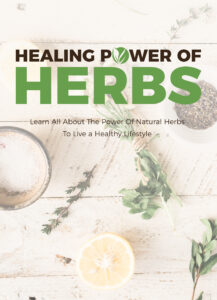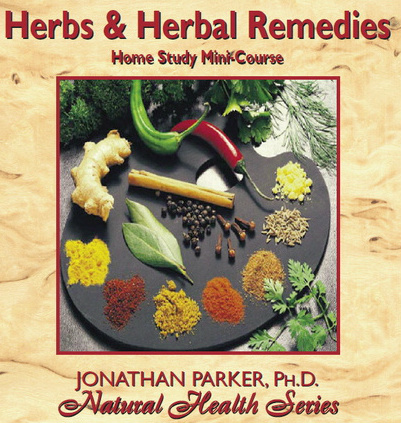Parsley: Ancient Healing and Ritual Practices

Before diving in, please note: This post is for informational purposes only. If you’d like to know more about how we approach topics, feel free to check out our friendly Disclaimer Page.
Hey there, amazing readers! 🖐️ Just a quick note: yes, we know there are a lot of ads here. Trust us, we get it—it’s not the prettiest look, but they help us keep this blog alive and kicking. Those pesky little ads cover the costs of all the behind-the-scenes magic, from hosting and tech stuff to creating content we hope you’ll love.
We’re committed to delivering quality posts, and your support (even just sticking around despite the ads) means everything to us. So, bear with us, and thanks for helping us keep the good vibes rolling. Now, on to the fun stuff! 😉
TRANSLATE BUTTON AT THE END OF THE ARTICLE
Introduction to Parsley
Parsley, scientifically known as Petroselinum crispum, is a versatile herb that has been utilized for its culinary, medicinal, and ritualistic properties for centuries.
This vibrant green herb is a staple in kitchens worldwide, adding a burst of freshness and flavor to dishes.
However, its uses go beyond the culinary realm, as parsley has a rich history of being revered for its healing properties and its role in various cultural practices.
History of Parsley Use
The use of parsley dates back to ancient times, with its origins believed to trace back to the Mediterranean region.
The ancient Greeks and Romans both appreciated parsley not only for its culinary value but also for its medicinal benefits.
In Greek mythology, parsley was associated with Archemorus, the son of Achilles, symbolizing death and mourning.
However, parsley was also used in Greek athletic games to crown victors, highlighting its dual significance in ancient culture.
Medicinal Properties of Parsley
Parsley is rich in vitamins, minerals, and antioxidants, making it a powerhouse of nutrients with various health benefits.
It is known for its anti-inflammatory and diuretic properties, aiding in digestion and promoting overall well-being.
Parsley is also high in vitamin C, which boosts the immune system and supports collagen production for healthy skin.
Additionally, parsley contains compounds like apigenin and myristicin, which have been studied for their potential anti-cancer effects.
Ancient Healing Practices
In ancient times, parsley was used for its medicinal properties to treat a variety of ailments.
The Greeks believed parsley could ward off evil spirits and used it as a garnish to protect against intoxication.
In traditional Chinese medicine, parsley was utilized to stimulate appetite, improve digestion, and alleviate bloating.
Similarly, in Ayurveda, the ancient Indian system of medicine, parsley was prescribed for its anti-inflammatory and detoxifying properties.
Ritual Uses of Parsley
Parsley has also played a significant role in various cultural and ritual practices throughout history.
In medieval Europe, parsley was associated with death and was often planted on graves to honor the deceased.
In Jewish Passover traditions, parsley is dipped in saltwater and consumed as a symbolic gesture of the tears shed by the Israelites during their slavery in Egypt.
Parsley has been used in rituals for purification, protection, and fertility across different cultures and religions.
Parsley in Traditional Medicine
Traditional herbal medicine systems around the world have recognized the healing potential of parsley for centuries.
In traditional Arabic medicine, parsley was used to treat digestive issues, high blood pressure, and urinary tract infections.
Native American tribes incorporated parsley into remedies for coughs, colds, and arthritis.
In European folk medicine, parsley was believed to have mystical powers, with superstitions surrounding its ability to protect against evil spirits and bring good luck.
Modern Applications of Parsley
In contemporary times, parsley continues to be valued for its health benefits and culinary versatility.
It is often used in natural remedies for bloating, indigestion, and menstrual cramps due to its anti-inflammatory properties.
Parsley is also a common ingredient in detoxifying juices and herbal teas, promoting cleansing and revitalization.
Additionally, parsley’s fresh and vibrant flavor makes it a popular choice in salads, soups, stews, and sauces in modern cooking.
Nutritional Benefits of Parsley
Parsley is a nutritional powerhouse, packed with vitamins A, C, and K, as well as minerals like iron, calcium, and potassium.
It is low in calories but high in antioxidants, making it an excellent addition to a healthy diet.
The vitamin K content in parsley supports bone health and blood clotting, while vitamin C boosts immunity and collagen production.
Parsley also contains chlorophyll, which helps to detoxify the body and promote overall wellness.
Discover the "Healing Power of Herbs" 🌿
Culinary Uses of Parsley
Parsley is a versatile herb that adds fresh and vibrant flavor to a wide range of dishes.
It is commonly used as a garnish to enhance the presentation of plates, but it also plays a significant role in recipes.
Parsley can be used in marinades, dressings, sauces, and dips to add a burst of freshness.
It pairs well with meats, fish, vegetables, and grains, bringing a bright and herbaceous taste to many culinary creations.
Whether chopped finely or used whole, parsley adds depth and complexity to dishes.
Growing and Harvesting Parsley
Parsley is an easy herb to grow, making it a popular choice for home gardeners.
It thrives in well-drained soil and prefers full sun to partial shade.
Parsley can be grown from seeds or seedlings and requires regular watering to keep the soil moist.
Harvesting parsley is simple – you can snip off individual leaves or cut entire stems as needed.
Fresh parsley can be stored in the refrigerator for up to a week, or it can be dried or frozen for longer-term use.
Precautions and Side Effects
While parsley is generally safe for consumption in culinary amounts, some precautions should be taken, especially in medicinal doses.
Parsley contains compounds that may be harmful in large quantities, such as apiol and myristicin.
Pregnant women should avoid consuming large amounts of parsley, as it may stimulate uterine contractions.
Individuals with kidney disease should also exercise caution, as parsley’s diuretic properties may exacerbate certain conditions.
Always consult with a healthcare provider before using parsley in medicinal doses.
Conclusion: Parsley’s Timeless Importance
In conclusion, parsley’s significance as a healing herb and ritualistic plant spans across cultures and centuries.
From ancient civilizations to modern-day applications, parsley has been valued for its medicinal properties, culinary uses, and symbolic meanings.
Whether utilized in traditional medicine, incorporated into cultural rituals, or enjoyed in everyday cooking, parsley continues to hold a special place in the hearts and homes of people worldwide.
Its rich history and diverse applications make parsley a timeless herb that will continue to be cherished for generations to come.

The Enlightenment Journey is a remarkable collection of writings authored by a distinguished group of experts in the fields of spirituality, new age, and esoteric knowledge.
This anthology features a diverse assembly of well-experienced authors who bring their profound insights and credible perspectives to the forefront.
Each contributor possesses a wealth of knowledge and wisdom, making them authorities in their respective domains.
Together, they offer readers a transformative journey into the realms of spiritual growth, self-discovery, and esoteric enlightenment.
The Enlightenment Journey is a testament to the collective expertise of these luminaries, providing readers with a rich tapestry of ideas and information to illuminate their spiritual path.
Our Diverse Expertise 🌟
While our primary focus is on spirituality and esotericism, we are equally passionate about exploring a wide range of other topics and niches 🌍📚. Our experienced team is dedicated to delivering high-quality, informative content across various subjects ✨.
To ensure we provide the most accurate and valuable insights, we collaborate with trusted experts in their respective domains 🧑🏫👩🏫. This allows us to offer well-rounded perspectives and knowledge to our readers.
Our blog originally focused on spirituality and metaphysics, but we’ve since expanded to cover a wide range of niches. Don’t worry—we continue to publish a lot of articles on spirituality! Frequently visit our blog to explore our diverse content and stay tuned for more insightful reads.
Discover the "Healing Power of Herbs" 🌿
Unlock the ancient wisdom of herbal remedies with this comprehensive guide! Perfect for beginners and enthusiasts alike, this e-book dives into the powerful benefits of herbs for health, wellness, and natural healing.
Inside, you’ll find:
Easy-to-follow recipes for teas, tinctures, and remedies.
A guide to the most effective herbs for common ailments.
Tips on growing and storing your own herbs.
Transform your health naturally and embrace the healing power of nature. 🌱 Start your journey today!Discover the "Healing Power of Herbs" 🌿







